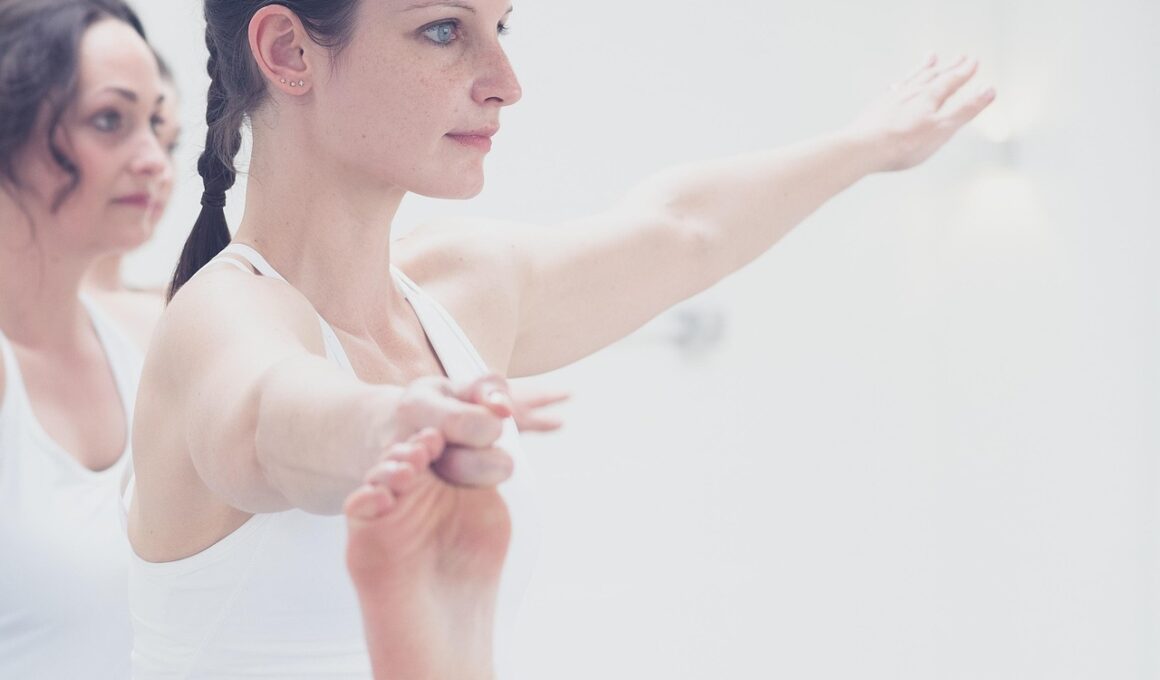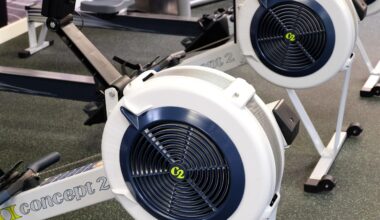15-Minute Daily Balance Routine for Seniors
As seniors age, maintaining balance and stability becomes crucial for preventing falls and ensuring overall mobility. A consistent balance routine can significantly enhance physical stability, improve coordination, and foster independence. In this article, we will outline a simple, 15-minute daily routine that can be easily performed at home. These exercises are designed to strengthen muscles, improve proprioception, and boost confidence. Beginners should start with these easy-to-follow exercises, gradually increasing their duration or intensity as they progress. Regular practice will not only enhance balance but also promote better posture and flexibility. To achieve optimal results, seniors should wear supportive footwear and use sturdy chairs or handrails for safety during exercises. Remember, consistency is key. Fitting these exercises into daily routines can be fun and rewarding. This guide will provide clear instructions for each movement, a warming up session that helps prevent injuries, and cool down stretches to maintain flexibility. Check with a healthcare professional before starting this routine, especially if there are health concerns. It’s time to take control of your balance and stability; let’s dive right in!
Warm-ups are essential for preparing your body for physical activity. Here’s a warm-up routine to initiate blood flow and get your muscles ready. First, gently march in place for about two minutes, lifting your knees slowly to avoid strain. Next, perform arm circles by extending your arms out to the sides and moving them in circular motions, both forward and backward for roughly 15 seconds each. Follow this with gentle neck rotations—slowly turn your head from side to side. Don’t forget to include some ankle rotations, which are vital for ensuring that your lower limbs are flexible. Stand on one leg, using a chair for support, and gently rotate the other ankle in circles. Repeat on the opposite side. Each movement should be performed carefully, focusing on maintaining control to build stability. If balance is challenging, you may practice near a wall or sturdy furniture. Warm-ups help prevent injuries and prepare you for the workout ahead. After this warm-up section, you will feel more energized and ready to engage in the upcoming balance exercises effectively, creating a solid foundation for your routine.
Essential Balance Exercises
Now that you are warmed up, it’s time to proceed with the balance exercises tailored for seniors. Start with the ‘Single-Leg Stand’ exercise. Hold onto the back of a sturdy chair or countertop and lift one foot off the ground, balancing on the other leg. Aim to hold this position for 10 to 30 seconds. Switch legs and repeat. This will enhance your stability and strengthen your leg muscles. Next, try ‘Heel-to-Toe Walk’; this entails placing one foot directly in front of the other, walking in a straight line. Focus on keeping your spine aligned and your steps slow and controlled. Additionally, ‘T-Y Balance’ is worthwhile; extend one leg behind you while extending the same arm forward in a “T” position. This can be harnessed for improved muscle coordination. Aim for 5 to 10 repetitions on each side. Lastly, finish with a ‘Side Leg Raise’; stand straight while raising one leg to the side without leaning. This will fortify your hip muscles, contributing to better balance.
As you practice these exercises, listening to your body is crucial. Always remember that it’s normal to feel challenged; however, avoid straining or pushing yourself too far. Maintain focus on proper form to reap maximum benefits safely. Take your time with each exercise and practice steady breathing to help you stay calm. If you feel unsteady, use a chair or wall for support. Consider utilizing audio guidance or a mirror for feedback during your practice to ensure you’re performing movements correctly. Be patient and consistent, allowing your body time to adapt to the workout. Incorporate these exercises into your daily routine, aiming for at least five days a week for optimum results. Keeping a record of your progress can also be encouraging. If you encounter difficulties, don’t hesitate to consult fitness professionals or therapists for tailored adjustments. They can offer personalized options that cater to your specific needs. With commitment, you will notice improvements in your balance, stability, and overall confidence, fostering a healthier and more active lifestyle.
Incorporating Flexibility in Your Routine
Flexibility plays a vital role in balance and stability, alongside strength and coordination. Incorporating stretching into your daily routine helps enhance mobility, contributes to better posture, and reduces the risk of injuries. After completing balance exercises, dedicate a few minutes to stretch major muscle groups. Focus on stretching your calves, quadriceps, hamstrings, arms, and back. A ‘Gentle Forward Bend’ will stretch your hamstrings and lower back; as you bend forward, let your arms dangle gently towards the floor. Hold this position for 15 to 30 seconds, breathing deeply. Another useful stretch is the ‘Seated Twist’; while seated, gently twist your torso to the right, holding onto the armrest, and repeat on the other side. You may find ‘Side Bends’ beneficial too, where you reach one arm overhead and lean to the opposite side, stretching the side of your body. Remember to breathe deeply during stretches, focusing on releasing tension. Practicing flexibility enhances your range of motion, making regular activities easier and more enjoyable while complementing the strength of your balance training.
As part of your daily balance routine, it is crucial to focus on recovery and adaptation. After exercising, elevate your routine with a cool-down session, helping your body transition effectively. Consider gentle deep breathing combined with slow movements, decreasing your heart rate. Performing static stretches after each session allows your muscles to relax and aids in recovery. Pay special attention to any areas that feel tight or sore, ensuring to incorporate gentle movements that align with your body’s needs. Gradually easing out of your workout is equally vital as warming up, maintaining bodily responsiveness and preventing stiffness. Additional self-care activities, such as massages or warm baths, can dramatically improve muscle recovery and relaxation. Listening to your body is paramount; if fatigued, allow extra rest, and adapt based on energy levels. Consistency, patience, and self-care will yield significant improvements over time. Connect with fellow seniors or join community classes to encourage social engagement concerning fitness. Building a supportive network can greatly enhance motivation levels, leading to successful adherence to your newly formed balance and stability habits.
Final Thoughts on Balance Training
In summary, a 15-minute daily balance routine is an achievable and beneficial practice for seniors. Consistency in performing these exercises will gradually build strength, enhance coordination, and improve overall stability. By addressing your balance, you reduce the risk of falls, which is crucial for long-term health and independence. The suggested routine includes warm-ups, essential balance exercises, flexibility training, and cooldowns, providing a balanced approach to physical activity. Encourage participation with a partner or family member, making this journey enjoyable and motivating for everyone involved. Stay mindful of your progress and be gentle with your body. As you begin mastering these movements, they will become an integral part of your daily wellness routine. Remember that the goal is to feel secure and confident while moving. With the correct attitude, dedication, and awareness of your body’s needs, creating a safe and successful exercise regimen is within reach. Embrace this chance to invest in your health, stay active, and maintain independence as you navigate through life’s beautiful journey of aging.
Explore more resources on balance training and discover additional exercises through reputable sources. The internet offers numerous websites and videos dedicated to senior fitness. Visit online forums that foster community discussions, where seniors share their experiences and best practices. Engaging in fitness classes specifically designed for older adults can also be beneficial, as they provide expert guidance and camaraderie. Remember, the path towards improved balance starts with small steps, and every effort counts. By integrating these practices into your daily life, you’ll create a solid foundation for better physical health, ensuring yourself a more fulfilling and active lifestyle. Take the leap today; your future self will thank you.


